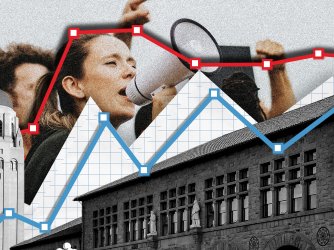Table of Contents
Exonerated professor: Months-long investigations of protected speech are incompatible with academic freedom
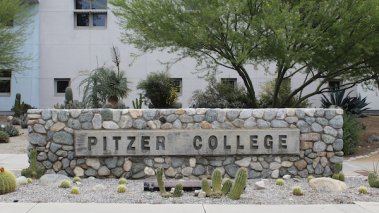
(Barbara Kalbfleisch / Shutterstock.com)
Between 1946 and 1958, the United States detonated 23 nuclear bombs on Bikini Atoll, a chain of islands in the Pacific Ocean. Four days after the nuclear tests began, French clothing designer Louis Réard introduced a skimpy two-piece bathing suit he dubbed the “bikini.” Réard hoped the sexual allure of the new swimwear would shock the world in the same way the atomic bomb did.
It’s an interesting bit of history — but one you may want to avoid telling if you’re teaching a class at Pitzer College.

Explaining the origin of the bikini’s name in a history class was one of the remarks that led to a harassment complaint and a months-long investigation of Pitzer College professor Daniel Segal. Writing for the blog of Academe, the magazine of the American Association of University Professors, Segal describes how a student accused him of harassment for pedagogically relevant classroom comments and for screening the Holocaust documentary “Night and Fog” in his world history course. Segal says he was ultimately cleared of these and other charges, but not before Pitzer put him through a 126-day investigation and adjudication involving multiple levels of administrative review.
Segal’s story, encapsulated by the headline “Not All Is Well That Ends Well,” provides a case study in how investigations of faculty for protected speech — even those that do not end in punishment — can have devastating effects on both the individual faculty member and academic freedom.
The chilling effect of investigations of protected speech
The delivery of course content Segal describes is plainly protected by Pitzer’s promises of academic freedom. Pitzer incorporates the AAUP’s 1940 Statement of Principles on Academic Freedom and Tenure into the faculty handbook, recognizing that the “teacher is entitled to freedom in the classroom in discussing his/her subject.” Pitzer’s discrimination and harassment policy provides that it should not “be interpreted to prohibit conduct that is legitimately related to the course content, teaching methods, scholarship, or public commentary of an individual faculty member.”
Unfortunately, Segal writes, those promises “did not shield me from being subjected to this adjudication as a consequence of my having done nothing other than what faculty should do: teach on the basis of their knowledge and best professional judgment.”
Instructors must feel free to challenge their students by exploring and discussing new or controversial ideas.
At every stage of review in Segal’s case, the determination was the same: no harassment and no policy violation. But the process still dragged on for four months. This should not have happened because, as Segal notes, there was no material factual dispute about what he said or did, and the challenged remarks were, on their face, clearly protected.
During that period, Segal says that much, if not most, of his time at work was occupied by navigating the adjudication process and preparing his defense to each allegation. He also retained legal counsel to protect his rights.
Segal confesses that the experience has made him more reticent in the classroom:
I know that in teaching this fall, my consciousness of the adjudication process has been a recurring distraction undermining my focus, especially in the give-and-take of classroom discussions where a faculty member cannot prepare comments in advance. And I know that at some moments in those discussions, it has led me to “not go there,” that is, to not explore certain examples or lines of thought that I otherwise would—and should—have pursued.
This is a predictable result. If you’re a professor who knows there is a more-than-negligible chance that a student will report you for saying anything remotely controversial, and that no matter how frivolous the complaint is, no matter how obviously protected your speech is, you may be subjected to a protracted investigation that puts unreasonable demands on your time, energy, and bank account, you may very well succumb to a bit of self-censorship.
Over 100 years ago, in 1915, the AAUP recognized the danger in faculty teaching or doing research under the influence of factors other than their own academic judgment and that of their peers:
To the degree that professional scholars, in the formation and promulgation of their opinions, are, or by the character of their tenure appear to be, subject to any motive other than their own scientific conscience and a desire for the respect of their fellow experts, to that degree the university teaching profession is corrupted; its proper influence upon public opinion is diminished and vitiated; and society at large fails to get from its scholars, in an unadulterated form, the peculiar and necessary service which it is the office of the professional scholar to furnish.
The free and open discussion of ideas that is the sine qua non of higher education cannot flourish when faculty have to walk on eggshells to minimize the risk of offending students. Under these conditions, public confidence in the enterprise is liable to disappear. Instructors must feel free to challenge their students by exploring and discussing new or controversial ideas.
Universities should screen complaints about speech before launching a formal investigation
To that end, college administrations have an obligation to ensure their policies and procedures do not contribute to a climate of fear and stunted discourse. As Segal argues, one thing they can and should do is put in place a mechanism for the immediate dismissal of facially meritless allegations of misconduct.
FIRE put forward a similar recommendation earlier this year after Stanford University investigated a frivolous complaint about a law student’s satirical email:
Allegations of student or faculty misconduct which involve expressive activity should receive a threshold review before a formal investigation is opened into a student or faculty member. Allegations that do not plausibly suggest unprotected expression must be summarily rejected and no further investigation conducted or charges brought.
A threshold review must:
- Analyze and conclude whether, accepting the complainant’s allegations as true, the speech would be unprotected under First Amendment principles. If the alleged violation involves both protected speech and speech or conduct that is not protected, the finding should specifically identify any speech that is protected.
- Be conducted by an administrator trained in the principles of expressive rights; and
- Be set forth in writing and a copy given to the student or faculty member at the outset of any investigation.
While there may be instances in which it is not reasonably possible to undertake such a review (such as when a student makes a true threat of violence), such a review should be done whenever circumstances allow or as soon as reasonably practicable.
We noted that a threshold review “would give breathing space to student and faculty speech.” Some allegations of harassment require a formal investigation and adjudication. But when the allegation on its face concerns protected speech, no such response is required. Whether a complaint about expressive activity requires investigation is something that can and should be determined at the outset to avoid the chilling effect of intrusive, drawn-out investigations of protected speech. In the case of faculty, the preliminary screening should be performed by a committee of experts — including faculty — familiar with principles of academic freedom.
Unfortunately, the impact of unwarranted investigations on free speech and academic freedom is lost on some observers. Sure, some argue, The New School investigated professor Laurie Sheck for germane classroom comments — quoting James Baldwin — that were unquestionably protected by academic freedom, but so what? The school ultimately found no policy violation. Never mind that the notice of investigation provided scant detail of Sheck’s allegedly wrongful conduct, that she was summoned to a mandatory meeting to answer for plainly protected expression, and that her case then sat in limbo until days after FIRE intervened.
Yes, an initial screening is necessary every time a complaint is filed, but that does not mean a formal investigation is appropriate.
The free and open discussion of ideas that is the sine qua non of higher education cannot flourish when faculty have to walk on eggshells to minimize the risk of offending students.
Take the case of James Livingston, a white professor at Rutgers University, who in 2018 made comments on social media critical of gentrification in Harlem and jokingly “resigned” from the white race. Rutgers initially determined that Livingston’s post violated the university’s discrimination and harassment policy. After FIRE wrote to Rutgers demanding that the university reverse its ruling, the president ordered a reevaluation of the decision. Rutgers’ president also directed the Office of the General Counsel to convene an advisory group of First Amendment and academic freedom scholars and attorneys to provide guidance on alleged policy violations that involve questions of free speech or academic freedom, starting with Livingston’s case. The result? Rutgers overturned its finding against Livingston. Had the advisory group been involved from the beginning, Livingston could have been spared a lengthy, unwarranted investigation and appeals process.
In 2001, then-president of the University of Alaska Mark R. Hamilton made a statement that continues to serve as a model for how university administrations should respond to complaints about clearly protected speech:
What I want to make clear and unambiguous is that responses to complaints or demands for action regarding constitutionally guaranteed freedoms of speech CANNOT BE QUALIFIED. Attempts to assuage anger or to demonstrate concern by qualifying our support for free speech serve to cloud what must be a clear message. Noting that, for example, “The University supports the right to free speech, but we intend to check into this matter,” or “The University supports the right of free speech, but I have asked Dean X or Provost Y to investigate the circumstances,” is unacceptable. There is nothing to “check into,” nothing “to investigate.”
Misconduct policies must be clear, consistent, and compatible with free speech and academic freedom
Segal’s case reveals another deficiency in many universities’ disciplinary apparatuses: a confusing jumble of inconsistent policies, sometimes the legacy of piecemeal revisions made over the course of years. For example, the Claremont Colleges consortium, of which Pitzer is a part, has a systemwide sexual harassment policy that tracks Title IX regulations. Meanwhile, Pitzer has a separate policy for discrimination and harassment that does not fall within the scope of Title IX and uses different procedures and a broader definition of harassment. (FIRE covered this all too common issue — which results in a policy scheme that is confusing for students and faculty alike — in greater detail in our Spotlight on Speech Codes 2021 report’s “Spotlight on: New Title IX Regulations” feature.) Moreover, Segal notes, “one portion of Pitzer’s written policy mandates precisely the sort of initial screening I have argued is crucial, while a second firmly precludes it.” The second procedure was applied to his case.
As if all that wasn’t enough, Segal says the Title IX coordinator barred him from bringing his concerns about the administration’s disregard for academic freedom to the Faculty Executive Committee because it would constitute a breach of his “confidentiality obligations,” itself cause for sanctions. Thus, Pitzer could proceed with its wrongful investigation, comforted by the knowledge that its gag order would prevent Segal from telling his colleagues that his rights were being violated.
Free speech and academic freedom must remain paramount
The threat to free speech and academic freedom posed by administrative overreaction to harassment complaints is something that FIRE has sounded the alarm on for years. As we said in 2015 in response to the lengthy, unjustified Title IX investigation of professor Laura Kipnis: “Universities must, of course, take allegations of sex-based discrimination seriously. But Title IX does not excuse administrators from their responsibility to exercise good judgment and common sense.”
At every stage of review in Segal’s case, the determination was the same: no harassment and no policy violation.
Segal ends his essay with an important point that FIRE has made before: There need be no “conflict between a commitment to academic freedom and a commitment to act firmly against any and all harassment on our campuses.” In fact, quickly dismissing frivolous claims of harassment or discrimination advances the latter goal by allowing colleges and universities to devote more time and resources to addressing legitimate complaints.
Professor Segal’s post is well worth reading in full. It’s a wake-up call to Pitzer and other institutions of higher education to revise their policies to shore up academic freedom, which they can do while retaining the ability to investigate and punish actual misconduct.
Recent Articles
FIRE’s award-winning Newsdesk covers the free speech news you need to stay informed.
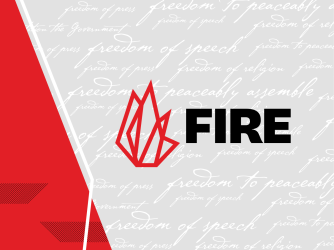
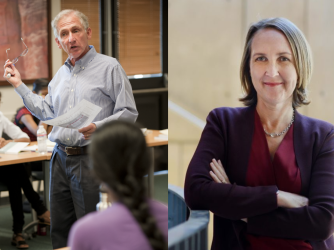
Stanford president and provost cheer free expression in open letter to incoming class
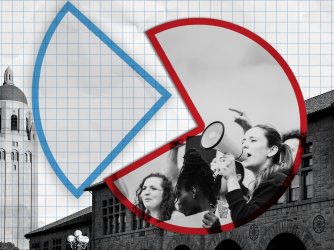
FIRE survey shows Judge Duncan shoutdown had ‘chilling effect’ on Stanford students
